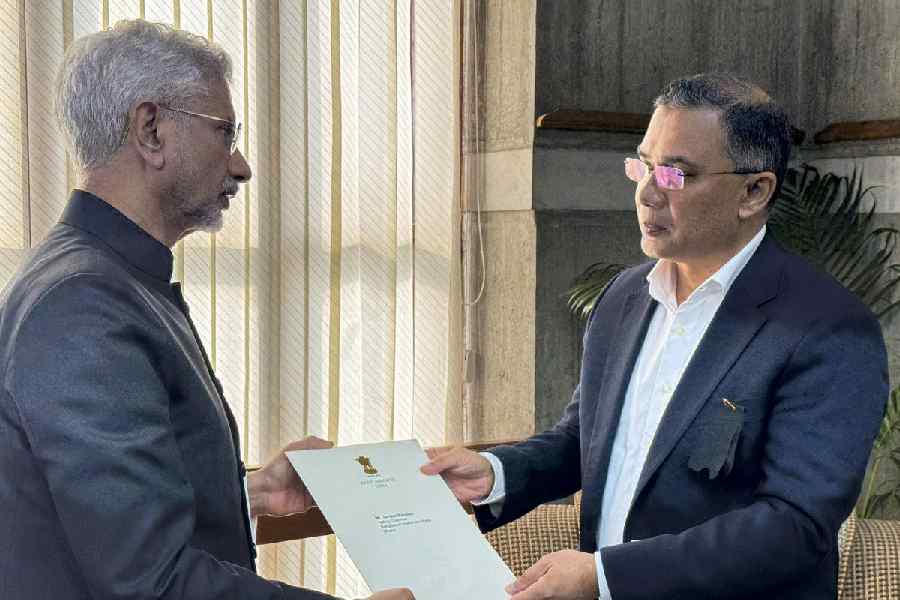Fifteen hours of overnight India-China military talks since Tuesday were “positive” but “inconclusive” with an “exact timetable for disengagement and de-escalation” remaining elusive, defence ministry sources said on Wednesday.
Army sources said the Chinese had shown positive intent at the talks but were “reluctant” to completely withdraw from the “Finger area” near the Pangong Lake, where they are said to have intruded 8km into territory that India claims.
No official word came from the government or the army on the meeting’s outcome. Sources said the army chief, General M.M. Naravane, had briefed defence minister Rajnath Singh on the talks — the fourth round between the corps commanders — which began at 11am on Tuesday and continued till 2am on Wednesday.
A defence ministry statement in the evening said that “considering the security environment due to prevailing situation along the northern borders,” the defence acquisitions council under Rajnath had allowed the armed forces to spend up to Rs 300 crore to meet immediate operational requirements.
“This will shrink the procurement timelines and ensure placement of orders within six months and commencement of deliveries within one year,” the ministry said.
Neither India nor China has so far revealed any specific details of the agreed parameters of disengagement.
At the overnight talks at Chushul, on the Indian side of the Line of Actual Control (LAC), “both sides showed positive intent and agreed on stepwise disengagement and de-escalation and the restoration of peace and tranquillity along the border,” a defence ministry official told The Telegraph.
“But the talks remained inconclusive as the exact timetable for disengagement and de-escalation could not be finalised.”
An army official said: “The Chinese side are said to have agreed to pull back from other friction points except the Finger area. They are willing to thin their troops’ presence in the Finger area but are not agreeing to pull back completely.”
In the Pangong Lake area, India claims territory till Finger 8 but the Chinese have advanced 8km up to Finger 4 from their erstwhile position at Finger 8. Chinese troops are reported to have moved back only a few boats from the lake, which Indian sources have described as a “cosmetic” change.
“They want their presence in the Finger area to control the heights and to keep an eye on our soldiers, which is not acceptable to us,” the army official said.
During the talks, he said, the Indian side pressed for the restoration of status quo ante. “The issue is also being raised through diplomatic channels,” he said.
Troops from either side are said to have pulled back 1.5km at two points — Patrolling Point 14 in the Galwan Valley and Hot Springs — creating “buffer zones” within Indian territory. Some army and diplomatic veterans have questioned the logic of India retreating from its own claimed territory as part of the disengagement.
Patrolling Point 14 is where 20 Indian soldiers were killed in a clash with Chinese troops on June 15 — exactly a month ago — while participating in the disengagement process agreed on June 6.
The Chinese have so far not retreated from their positions in the Depsang Plains, a security official said.
“The Indian side is said to have flagged the issue during the latest talks and asked the Chinese to initiate disengagement from the two friction points (Depsang and Pangong Lake),” he said.
Despite the ongoing military talks, the reports from the ground “do not look encouraging” as the Chinese army continues to deploy men and weaponry along the LAC in eastern Ladakh, the security official said.
To counter any threat, India’s army has done a mirror deployment.
Rajnath visit
Sources said Rajnath was scheduled to visit Ladakh on Friday to review India’s military preparedness. He is expected to visit forward areas, meet the senior military leadership and interact with the troops and the commanders on the ground.
Rajnath had earlier been scheduled to visit Ladakh on July 3, only to be edged out at the last minute by Prime Minister Narendra Modi.











